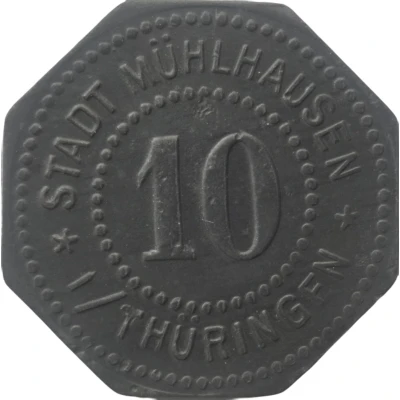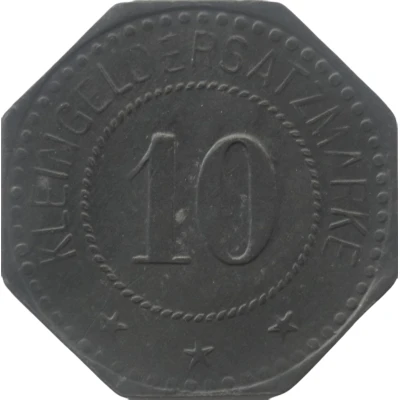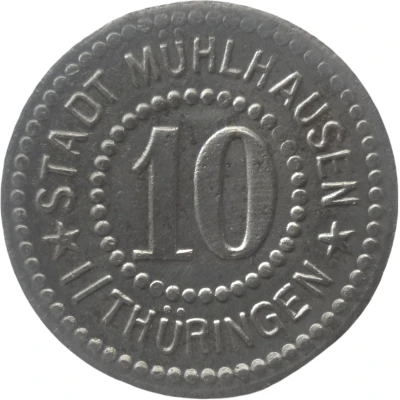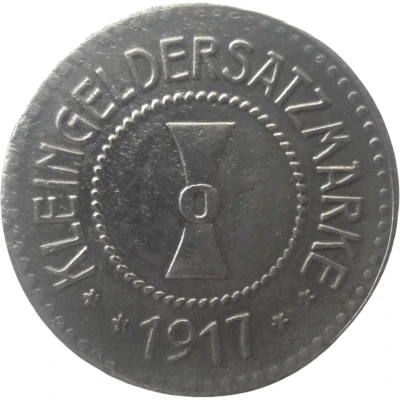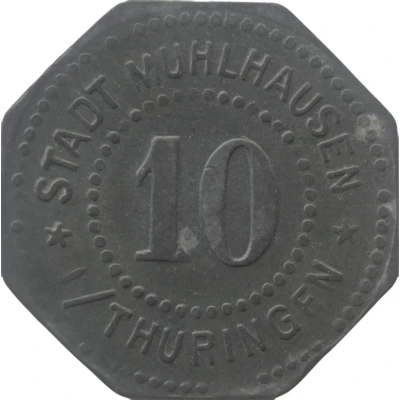
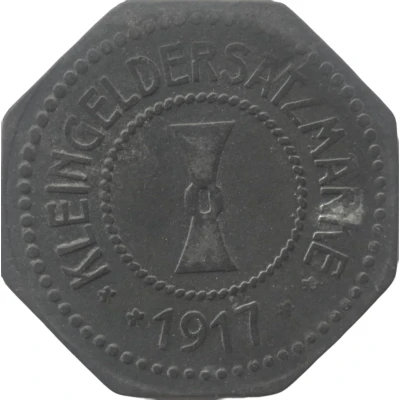

© Willem63 (CC BY-NC-SA)
10 Pfennigs - Mühlhausen in Thüringen
1917 year| Zinc | 2.3 g | 20.5 mm |
| Issuer | City of Mühlhausen (Thuringia) (Prussian province of Saxony) |
|---|---|
| Emperor | William II (Wilhelm II) (1888-1918) |
| Type | Standard circulation coin |
| Year | 1917 |
| Value | 10 Pfennigs (10 Pfennige) (0.10) |
| Currency | Mark (1914-1924) |
| Composition | Zinc |
| Weight | 2.3 g |
| Diameter | 20.5 mm |
| Thickness | 1.0 mm |
| Shape | Octagonal (8-sided) |
| Technique | Milled |
| Orientation | Medal alignment ↑↑ |
| Demonetized | Yes |
| Updated | 2024-10-04 |
| Numista | N#38875 |
|---|---|
| Rarity index | 82% |
Reverse
Pearl rim, legend surrounding rope circle with millrind centered
Script: Latin
Lettering:
KLEINGELDERSATZMARKE
★ ★ 1917 ★ ★
Edge
Plain
Comment
A millrind or simply rind is an iron support for the upper ("runner") stone in a pair of millstones.Interesting fact
One interesting fact about the 10 Pfennigs - Mühlhausen in Thüringen 1917 coin is that it was made of zinc, which was a unusual choice of material for coins at that time. Most coins were made of metals like copper, silver, or gold, but the use of zinc in this coin reflects the economic and political circumstances of Germany during World War I, when many traditional metal resources were scarce or unavailable. The use of zinc in this coin is a unique feature that sets it apart from other coins of its time.
